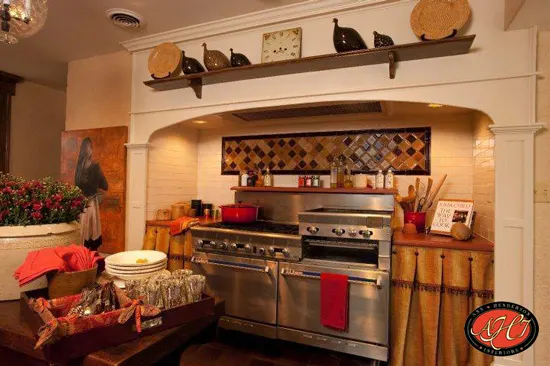Shop Our Handmade Ceramic Guinea Hen Statues
When I opened the shop a few years ago, I knew I had to find the “La Pintade” ceramic Guinea hens I had seen in the South of France many years prior. Needless to say, I got some questioning looks and comments about this idea of “fowl statues.” Nevertheless, the hens were the first boxes to arrive under my little red awning on West Street. The colorful array was as exciting as receiving live keets (baby hens) and every bit as engaging. I was so impressed by their whimsical beauty, Brancusi-like abstract silhouettes, and their easy adaptation to almost any perch. I hoped that others would welcome them into their hearts (and nests) as I had. These little hens continue to beguile the public from their Main Street roost — their delightfulness is a celebration of living creatures united with a love for decorative objects.
Lussan, France, 1971. A newlywed potter by the name of Heidi Callard, inspired by the beauty and artistic heritage of this village in Provence, shared a vision with her young husband. They decided to purchase a decaying farmhouse and set about creating a home and studio. After the birth of their son Adrien, Heidi rejuvenated her artistic spirit by painting the colorful guinea fowl around the farm. In 1974 this expression took a new direction: the potter’s gift of a three dimensional form.

Guinea fowl walking on a farm road by Martie Swart
“Having been fascinated for more than 30 years by the originality and the elegance of the Guinea hens that run free in my garden, it finally came to me that by immortalizing them in a harmonious and timeless object, I could convey my love of the Guineas to others.”
The small atelier has grown, now exporting hens around the world. Still located in the farmhouse in Lussan, Adrien has taken over the management of the business though Heidi is still involved in production. The hens come in three sizes and a gorgeous array of colors, inspired by the hens true feathers and the sumptuous natural palette of the south of France.
Guinea fowl spend their days communally foraging for bugs, and are prized by farmers for naturally controlling insects that threaten plants and livestock. Their worrisome and vocal nature makes them country folk’s best alarm system for animal or human interlopers. Those who are familiar with the birds admit that their squawking is at times annoying, but in the same breath will describe some other endearing observation. One such tale was of a male and female, reunited after just a few minutes apart, running towards one another clucking merrily like two long lost lovers. Another narrative described the male pacing and cackling while his mate was nesting. With shaking heads many have laughed to recall how a flock can absentmindedly wander off on some unknown important mission only to return days later.
 The La Pintade ceramics of Heidi Callard are endearing to collectors and to Guinea hen lovers. It is fun to now be amongst this smitten worldwide society. Someday perhaps I will have a few live Guinea hen of my own. Until then I love sharing Heidi’s creations, sharing the stories, and ruminating on the idea of art created from falling in love with something in nature. Somehow this just always seems to work.
The La Pintade ceramics of Heidi Callard are endearing to collectors and to Guinea hen lovers. It is fun to now be amongst this smitten worldwide society. Someday perhaps I will have a few live Guinea hen of my own. Until then I love sharing Heidi’s creations, sharing the stories, and ruminating on the idea of art created from falling in love with something in nature. Somehow this just always seems to work.
For those who know and love Guinea hens, there is no mistaking them for any other bird. I am delighted when shoppers share their Guinea fowl stories. Two sisters who lived in Africa once described to me how the Guinea hen roam free from village to village and rule the roadside with their busy anarchy. One gentleman was thrilled to find these hens for his wife as a memento of their flock, which had mysteriously disappeared and never returned. I’ll never forget the tale of a Southern Guinea fowl flock confronting a large rattlesnake and annihilating it. (This I found a bit incredulous, but I can assure you dear reader there are YouTube videos proving the point.) The reality is that human beings are drawn to these creatures.

